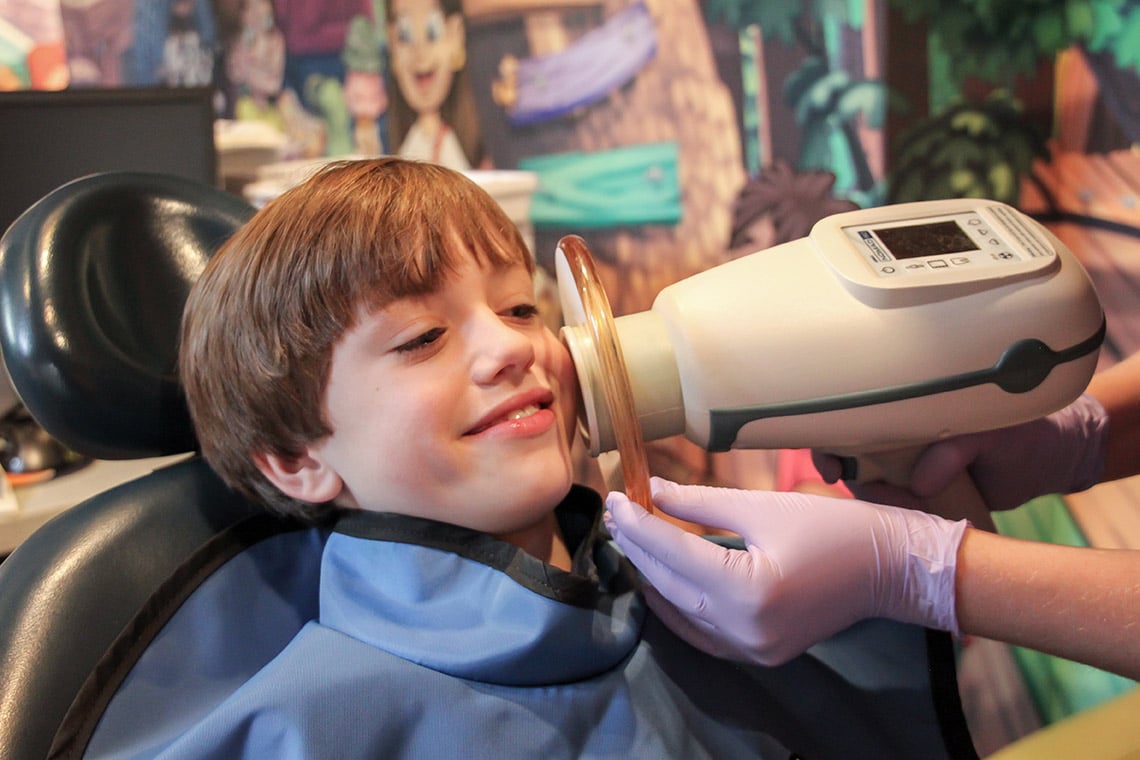FAQs


Frequently Asked Questions
What is a Pediatric Dentist?
Pediatric dentists such as Dr. Vaughn and Dr. Simon are highly trained dentists who have completed residencies in pediatric dentistry beyond dental school. This special training teaches them to know what is best at every developmental stage from infancy all the way through the teenage years, and they are trained to work with the complex medical problems associated with children who have special healthcare needs. The pediatric dental experience is designed to make going to the dentist fun and worry-free so kids learn to love the dentist.
Which type of toothbrush should I use?
The brand of the toothbrush is not as critical as the type of bristle and the size of the head. A soft toothbrush with a small head is recommended because medium and hard brushes tend to cause irritation and contribute to recession of the gums. A small head allows you to get around each tooth more completely and is less likely to injure your child’s gums. The best method for brushing a child’s teeth is to use the circular scrub technique which means brushing in small circles and moving the brush from tooth to tooth.
Is one toothpaste better than others?
Generally, no. However, it is advisable to use a toothpaste containing fluoride to decrease the incidence of dental decay. To create good habits, we recommend our patients use what tastes good to them, as long as it contains fluoride.
How often should my child floss?
Flossing of the teeth once per day helps to prevent cavities from forming between the teeth where your child’s toothbrush can’t reach. Flossing also helps to keep gums healthy.
What types of fillings do we use?
For our restorative procedures, we follow all guidelines from ADA policy. For our filling materials, we use composite and glass ionomer. These are commonly referred to as white filling materials. These materials have the look of natural tooth structure. They also have a tendency to be better with regards to sensitivity.
What is a stainless steel crown?
When decay in a posterior baby tooth gets too large, a filling will not work. In these instances, a crown is placed on top of tooth, after the decay has been removed to restore function and viability for that tooth. The reason for saving this tooth as opposed to extracting it is to restore chewing function and prevent space loss.
What is space loss?
Space loss occurs when a posterior baby tooth is lost due to decay or injury prior to when it should come out on its own. When this happens, the surrounding teeth crowd into the open space. This crowding inhibits the adult tooth, which is still in the gums, from coming into the right spot. If crowding becomes severe enough, the child will need braces and possibly surgery to ensure that the adult tooth erupts into the correct position.


